Found a total of 10000 related content

Bringing Unicode to PHP with Portable UTF-8
Article Introduction:Core points
Although PHP is able to handle multibyte variable names and Unicode strings, the language lacks comprehensive Unicode support because of treating strings as single-byte character sequences. This limitation affects all aspects of string operation, including substring extraction, determining string length, and string segmentation.
Portable UTF-8 is a user space library that brings Unicode support to PHP applications. It is built on top of mbstring and iconv, provides about 60 Unicode-based string manipulation, testing and verification functions, and uses UTF-8 as its main character encoding scheme. The library is fully portable and can be installed with any PHP 4.2 or higher
2025-02-23
comment 0
932
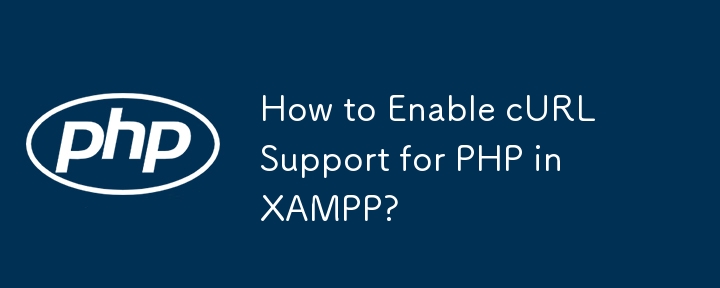
How to Enable cURL Support for PHP in XAMPP?
Article Introduction:How to Configure PHP for cURL Support on XAMPPcURL is a library that enables PHP to make HTTP requests. To use cURL with PHP, you need to ensure...
2024-12-09
comment 0
583

Manipulating Images in PHP Using GD
Article Introduction:This tutorial explores PHP's GD (Graphic Draw) library for efficient image manipulation. Managing numerous website images can be challenging, but GD automates tasks like resizing, cropping, and filtering.
This guide covers:
Image Creation with PHP
2025-03-04
comment 0
882
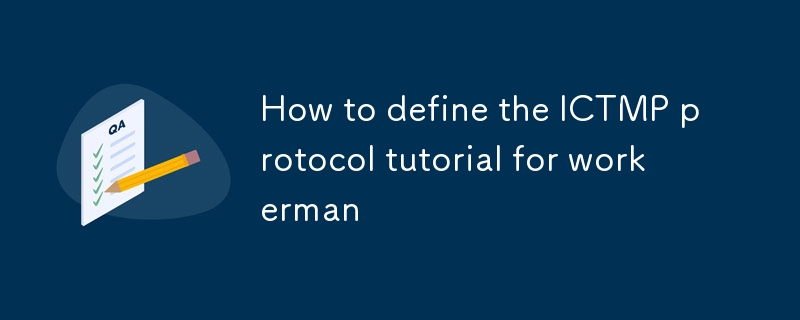
How to define the ICTMP protocol tutorial for workerman
Article Introduction:This tutorial explains why Workerman, a PHP framework, doesn't directly support ICMP. It details how to indirectly use Workerman for ICMP ping operations by leveraging OS-level tools or system calls for packet manipulation, with Workerman managing t
2025-03-06
comment 0
1097

Practical Guide for Internationalization of Go Language Web Applications (i18n)
Article Introduction:In view of the internationalization (i18n) requirements in Go language web applications, this article recommends the use of the go-i18n library as an efficient solution. This library supports Unicode CLDR plural rules and can handle complex plural forms in multilinguals; uses Go's built-in text/template for variable string rendering; and uses simple JSON format to store translation files, which greatly simplifies the internationalization process and provides developers with powerful and easy-to-use multilingual support capabilities.
2025-08-13
comment 0
789

php format date with ordinal suffix (st, nd, rd, th)
Article Introduction:Displaying dates with English ordinal numbers in PHP must be implemented through custom logic, because the date() function itself does not support this format; 1st is suitable for 1, 21, 31, 2nd is suitable for 2, 22, 3rd is suitable for 3, 23, and the rest is th; Method 1 can be used to splice suffix through the function format_date_with_suffix, and Method 2 recommends using the Carbon library to automatically support the S format; precautions include avoiding direct use of date('jS'), correct use of quotes, and suggesting using Carbon to deal with complex time problems.
2025-07-05
comment 0
185

Go language: In-depth understanding of package import mechanism and runtime dynamic loading restrictions
Article Introduction:Go does not support dynamic import of packages through string paths at runtime. This design is part of the core philosophy of Go, aiming to ensure compilation performance, code comprehensibility, and strong static analysis capabilities. Go's package import mechanism is static and explicit, and all dependencies must be determined at compile time, which enables the Go compiler to perform deep optimization and provides developers with a clear view of dependencies. Despite the need for runtime loading, the current standard library does not provide direct support.
2025-08-24
comment 0
188
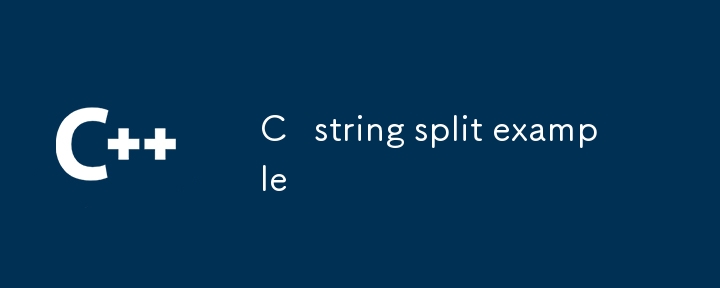
C string split example
Article Introduction:The standard library in C does not have a built-in string splitting function, but it can be implemented in the following ways: ① Use std::stringstream combined with std::getline to process single-character separators, which can effectively split strings and store them in vector; ② For continuous separators, you need to manually check whether token is empty to decide whether to filter; ③ If you need to support multi-character or string separators (such as "---"), you should use std::string::find and substr methods to loop to find and intercept substrings; ④ The last string needs to be added separately outside the loop. This method is practical and efficient, meeting different segmentation needs.
2025-08-05
comment 0
865

PHP Macros for Fun and Profit!
Article Introduction:Use the Yay preprocessor library to add syntax sugar to PHP to easily implement more elegant code! This article will demonstrate how to use the Yay library to add Ruby-like array slice syntax sugar $many[4..8] to PHP.
Core points:
Yay is a preprocessor library that allows developers to add syntactic sugar to other languages ??to PHP through macros.
Yay breaks the code string into tags, builds an abstract syntax tree (AST), then replaces the macro element with real PHP code, and reassembles the PHP code.
While there are some limitations in variable scope and parser, Yay still allows for the creation of cleaner and more efficient PHP code.
Many PHP developers come from other programming language backgrounds and are used to them
2025-02-15
comment 0
613

Introduction to PHP Arrays
Article Introduction:PHP arrays are containers that store multiple values, and support two forms: index arrays and associative arrays. 1. The index array uses numeric keys, which are suitable for sequential storage, such as: $fruits=array("apple","banana","orange"); 2. The associative array uses string keys, which are suitable for describing data with clear meaning, such as: $person=array("name"=>"John","age"=>25). Values can be accessed or modified directly through keys, such as: echo$pers
2025-07-17
comment 0
558
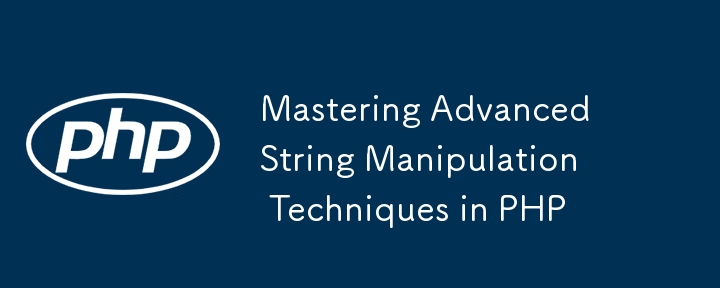
Mastering Advanced String Manipulation Techniques in PHP
Article Introduction:The key to mastering advanced PHP string manipulation is to use the right tools to handle encoding, performance, and complex formats. 1. Use preg_replace_callback() to implement dynamic substitution with logic, suitable for scenarios where conditional processing is required; 2. Use mbstring functions (such as mb_strlen, mb_substr) to process UTF-8 multi-byte strings to avoid truncation problems; 3. Use sscanf() to parse formatted strings, str_getcsv() to parse CSV line data to reduce regular dependencies; 4. Use implode() to replace frequent string splicing to improve performance, or use ob_start() to generate complex content; 5. Use heredo
2025-07-30
comment 0
678
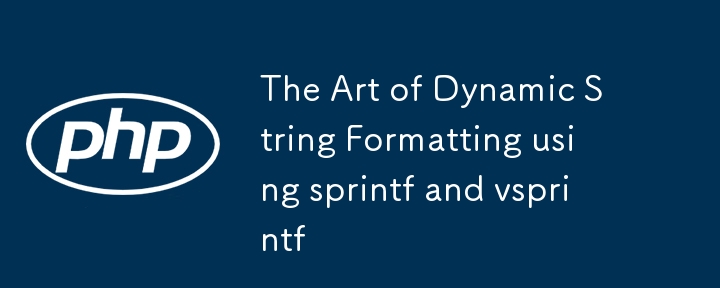
The Art of Dynamic String Formatting using sprintf and vsprintf
Article Introduction:sprintf and vsprintf are used for dynamic string formatting, but security issues need to be paid attention to; 1. Use snprintf and vsnprintf to prevent buffer overflow; 2. Avoid using user input as format strings to prevent formatted string attacks; 3. When the output length is unknown, use vsnprintf combined with dynamic memory allocation; 4. Be sure to free up dynamically allocated memory; 5. Prioritize std::ostringstream or fmt library in C; 6. Although there is no need to manage buffers in PHP, the input still needs to be verified; by using these methods reasonably, flexible and efficient string construction can be achieved while ensuring security.
2025-07-28
comment 0
476

PHP string to lowercase
Article Introduction:PHP provides a variety of string to lowercase methods, suitable for different scenarios. 1. The strtolower() function is suitable for most English scenarios, converting uppercase letters to lowercase, but poor support for non-ASCII characters; 2. mb_strtolower() supports multilingual, more accurate processing of Unicode encoding, and suitable for special characters such as French and German; 3. You can clean spaces or symbols in combination with trim() or preg_replace() to generate slug format; 4. Use LOWER() to achieve fuzzy matching in database queries, pay attention to whether the index is case sensitive. For pure English systems, strtolower() is used, while for internationalization requirements, mb_strtolower() is used.
2025-07-09
comment 0
316
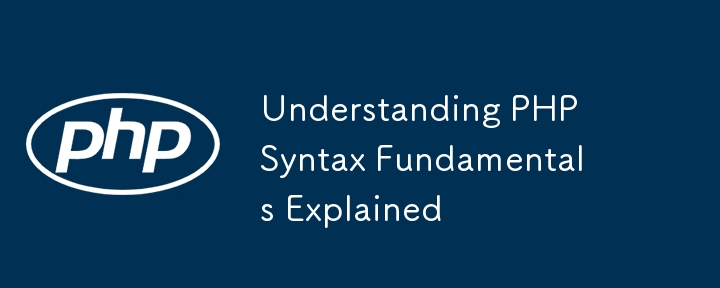
Understanding PHP Syntax Fundamentals Explained
Article Introduction:PHP is a scripting language used for back-end development. Its basic syntax includes four core parts: 1. PHP tags are used to define the code scope. The most common thing is that if all files are PHP code, closed tags can be omitted to avoid errors; 2. Variables start with $ without declaring types, support strings, integers, floating point numbers, booleans, arrays and objects, and can be cast through (int) and (string), etc. The variable scope is local by default, and global must be used to access global variables; 3. The control structure includes if/else condition judgment and foreach loops, which are used to implement program logic and repetitive task processing; 4. Functions are used to encapsulate code to improve reusability, and support parameter default values and
2025-07-18
comment 0
248

How to use PHP combined with AI to achieve text error correction PHP syntax detection and optimization
Article Introduction:To realize text error correction and syntax optimization with AI, you need to follow the following steps: 1. Select a suitable AI model or API, such as Baidu, Tencent API or open source NLP library; 2. Call the API through PHP's curl or Guzzle and process the return results; 3. Display error correction information in the application and allow users to choose whether to adopt it; 4. Use php-l and PHP_CodeSniffer for syntax detection and code optimization; 5. Continuously collect feedback and update the model or rules to improve the effect. When choosing AIAPI, focus on evaluating accuracy, response speed, price and support for PHP. Code optimization should follow PSR specifications, use cache reasonably, avoid circular queries, review code regularly, and use X
2025-07-25
comment 0
893

PHP string to uppercase
Article Introduction:There are four main ways to convert strings to uppercase in PHP, and the specific choice depends on the usage scenario. 1. Use strtoupper() to convert lowercase letters of the entire string to uppercase, which are suitable for English content, but do not support non-English characters with accents; 2. When dealing with multilinguals, mb_strtoupper() is recommended. It belongs to the mbstring extension and can correctly convert special characters such as French and German. It is recommended to specify the character set to UTF-8 when using it; 3. If you only need to convert the first letter, you can use ucfirst() to convert the first character of the string to uppercase; 4. If you want the first letter of each word to uppercase, you can use ucwords() to be used, which is suitable for formatting titles or usernames to display, but it does not recognize underscores by default.
2025-07-12
comment 0
970

How to Create and Validate an XML Document in JavaScript
Article Introduction:To create XML documents, you can use the browser's native DOMAPI or the xmldom library in Node.js, create a structure through DOMImplementation and serialize it into a string with XMLSerializer; 2. JavaScript does not have built-in XSD verification support, and libxmljs can be used in Node.js for XML schema verification. Note that it depends on the compilation environment; 3. In the browser, you can parse XML through DOMParser and check the parsererror element to determine whether the XML is in good format; 4. The browser-side complete XSD verification depends on back-end services or cloud API implementation. Therefore, appropriate XML processing should be selected according to the operating environment and
2025-08-14
comment 0
1012
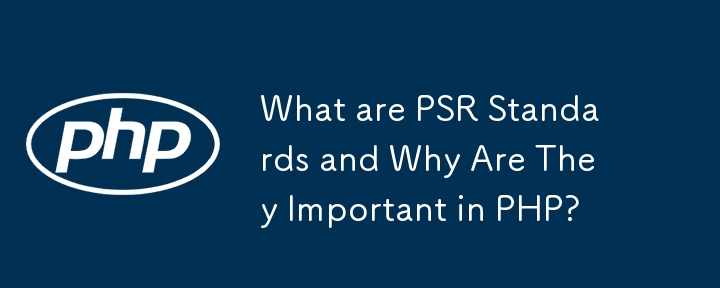
What are PSR Standards and Why Are They Important in PHP?
Article Introduction:PSR is a PHP standard recommendation, formulated by the PHP framework interoperability group, aiming to improve code consistency, readability and cross-frame compatibility. Common standards include: 1. Basic PSR-1 specifications, such as labels and naming conventions; 2. PSR-4 automatic loading standards, defining class and path mapping; 3. PSR-12 extended coding style, refined format rules; 4. PSR-3 log interface, supporting log library replacement; 5. PSR-7 HTTP message interface, convenient for middleware and API development. Its value is reflected in improving multi-project collaboration efficiency, enhancing tool support, simplifying integration, and improving code expertise. Application methods include using Composer to configure PSR-4, automatically format code with the help of tools, and manually following PSR
2025-07-10
comment 0
318
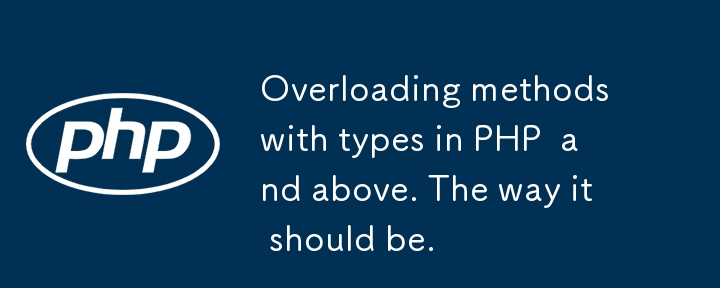
Overloading methods with types in PHP and above. The way it should be.
Article Introduction:PHP7.4 introduces type hints, which makes the PHP programming experience closer to languages ??such as Java or C#, which is great! However, I found that I can't overload methods like I can in other typed language projects. The solutions provided on StackOverflow were not satisfactory, so I thought about how to overload methods in the most efficient and concise way and created a support library for this. I wanted to share it with you because it might be the best solution you can find. You can get it on GitHub and learn more. I think the short code snippet below is enough to understand how it works. $userRepository=newUserRepository();$userR
2025-01-10
comment 0
1161

How do I perform arithmetic operations in PHP ( , -, *, /, %)?
Article Introduction:The methods of using basic mathematical operations in PHP are as follows: 1. Addition signs support integers and floating-point numbers, and can also be used for variables. String numbers will be automatically converted but not recommended to dependencies; 2. Subtraction signs use - signs, variables are the same, and type conversion is also applicable; 3. Multiplication signs use * signs, which are suitable for numbers and similar strings; 4. Division uses / signs, which need to avoid dividing by zero, and note that the result may be floating-point numbers; 5. Taking the modulus signs can be used to judge odd and even numbers, and when processing negative numbers, the remainder signs are consistent with the dividend. The key to using these operators correctly is to ensure that the data types are clear and the boundary situation is handled well.
2025-06-19
comment 0
385



















